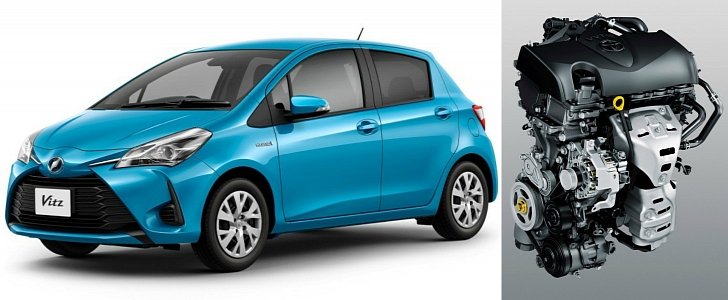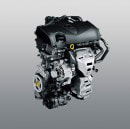Downsizing and turbocharging. For a car nut, those two words spell trouble. Most automakers, however, think otherwise. Mazda tries to keep the N/A flame alive, and so does Toyota.
If you’re living in Europe and you’re in the market for a new car with a 1.5-liter atmospheric engine, I’m afraid choices are extremely limited. Off the top of my head, your only options are Mazda’s 1.5-liter SkyActiv-G (found in the MX-5 and 2) and Toyota’s 1.5 presently available only in the Yaris Hybrid.
In non-hybrid form, however, the best the European-spec Yaris can do is a 1.3-liter that's both old and somewhat thirsty. For the 2017 Yaris, however, the automaker decided that a new engine would be fitting. With 111 PS (82 kW) and 136 Nm of torque at 4,400 rpm, the all-new 1.5 isn't a bruiser. To its defense, Toyota imbued it with a helluva lot of fuel-sipping technology.
A testament to what Toyota can do to a naturally aspirated engine is the thermal efficiency value: 38.5 percent. To put that value into a greater perspective, coal-dependent power stations achieve around 33 percent, whereas Mercedes’ F1 power unit hovers just around the 45 percent mark.
Part of the ESTEC (Economy with Superior Thermal Efficient Combustion) engine family, the 1.5-liter also happens to run a high compression ratio (13.5) and a cooled exhaust gas recirculation system. Compared to the 1.3-liter unit in the 2016 Toyota Yaris, the 1.5-liter promises 12 percent better fuel economy in the NEDC cycle, as well as superior acceleration to 100 km/h (11 seconds, which is 0.8 seconds better than the 1.3-liter powerplant).
Last, but certainly not least, the 2017 Toyota Yaris with the 1.5-liter benefits from something called VVT-iE, with iE standing for “intelligent system electric motor.” This allows the mill to run in the Otto and Atkinson cycles whenever the situation calls for it. The phase shift of the intake camshaft is controlled electrically, whereas the phase shift of the exhaust camshaft is hydraulic.
In non-hybrid form, however, the best the European-spec Yaris can do is a 1.3-liter that's both old and somewhat thirsty. For the 2017 Yaris, however, the automaker decided that a new engine would be fitting. With 111 PS (82 kW) and 136 Nm of torque at 4,400 rpm, the all-new 1.5 isn't a bruiser. To its defense, Toyota imbued it with a helluva lot of fuel-sipping technology.
A testament to what Toyota can do to a naturally aspirated engine is the thermal efficiency value: 38.5 percent. To put that value into a greater perspective, coal-dependent power stations achieve around 33 percent, whereas Mercedes’ F1 power unit hovers just around the 45 percent mark.
Part of the ESTEC (Economy with Superior Thermal Efficient Combustion) engine family, the 1.5-liter also happens to run a high compression ratio (13.5) and a cooled exhaust gas recirculation system. Compared to the 1.3-liter unit in the 2016 Toyota Yaris, the 1.5-liter promises 12 percent better fuel economy in the NEDC cycle, as well as superior acceleration to 100 km/h (11 seconds, which is 0.8 seconds better than the 1.3-liter powerplant).
Last, but certainly not least, the 2017 Toyota Yaris with the 1.5-liter benefits from something called VVT-iE, with iE standing for “intelligent system electric motor.” This allows the mill to run in the Otto and Atkinson cycles whenever the situation calls for it. The phase shift of the intake camshaft is controlled electrically, whereas the phase shift of the exhaust camshaft is hydraulic.


























